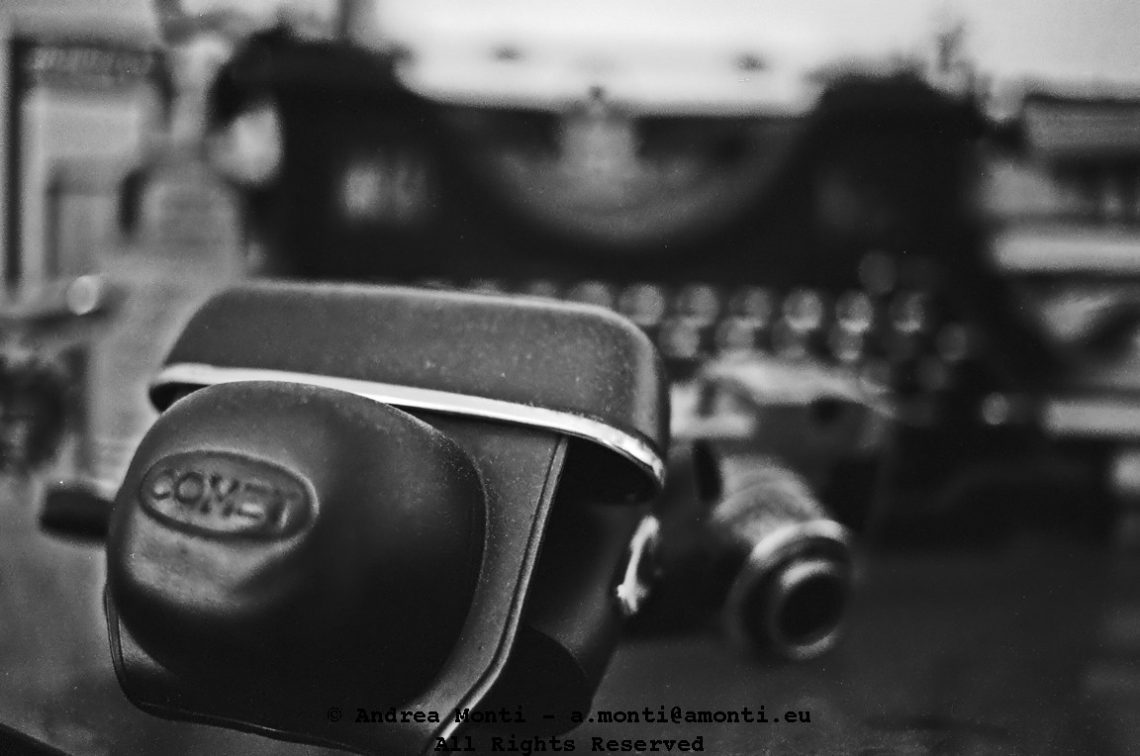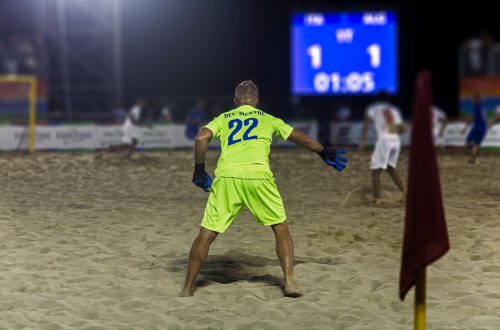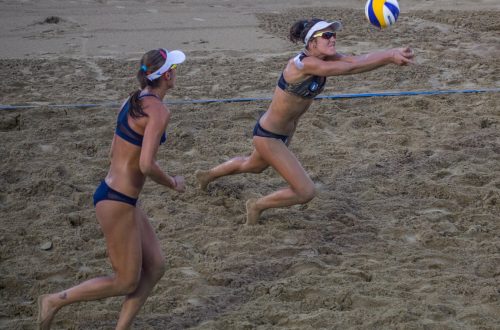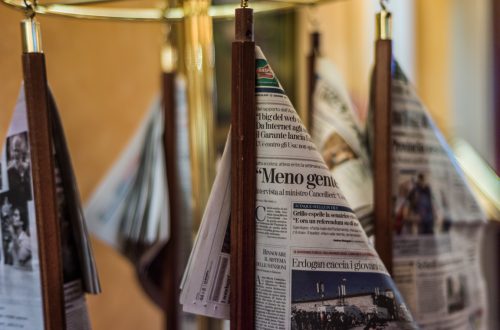
Italy, Street-Photography and the Law
 Update – 2
Update – 2
On July 2014 the Polizia Municipale of Rome seized a street-photographer ‘s camera, but the Court bashed the seizure.
Update – 1
Here is an A4 leaflet useful to stand your ground if your street-photography work is questioned by somebody else.
Introduction*
As there are few texts in English dealing with (street) photography and Italian laws, I’ve decided to put my lawyer‘s hat and sketch some toughts on the two main topics involving the Street-Photography: shooting candid and publishing them online.
To cut a long story short, Italian law follows a similar approach to other Western jurisdictions and – in particular – of Articles 8 and 10 of the European Convention on Human Rights:
- unsolicited photographs taken in public places are permitted where they are not for profit profit, for artistic and cultural purposes, do not infringe public safety, public morality or human dignity,
- (online) publishing is allowed with the same limitation.
The Street-Photography in Italy should be a pretty straightforward activity, but actually is not since there is a widespread negative attitude towards those photographers that, being mere mortals, do not belong to the “Olympus” inhabited by Cartier-Bresson, Capa, Frank, Maier and other of their peers. In other words, it would be easy for the likes of HCB, if caught in “the moment”, to explain who he is, and why is he taking a picture. On the contrary, it would be a lot harder for an unknown photographer, when confronted by an angry passer-by, to provide evidence of “cultural” or “artistic” interest in his hip-shooting.
The clash between the right to take pictures in public places, on the one hand, and, on the other, the (often mistaken) right to ownership of the personal image together with the (even more mistaken) right to “privacy” is not peculiar to Italy, but Italian law does have certain peculiarities of which a casual street photographer should be aware when traveling around this country. But please – reader – take into account that what follows is a general account, and as such it may need to be adapted to the specific circumstances related to the time, space and place of the photography in question.
Let’s start with the basics
Photography, as such, is protected by the Italian Constitution.
As a form of art, under Sect. 33 first paragraph that reads:
Art and Science are free and free is its teaching
As a form of free-speech, under Sect. 21 that reads:
Everybody has the right of freely express his own ideas by way of words, writings and with any other means
As a form of business, under Sect. 41 that reads
The private entrepreneurship is free.
It cannot be carried contrary to the social needs o in such a way to damage safety, freedom and human dignity.
Who and when can be photographed without prior consent
The privacy infringement excuse
The infringement of personal privacy is the usual “leverage” – club – that the portrayed person uses to prevent the photography or ask for its deletion. Although this is a fairly common situation, not only in Italy, there is very limited power under the protection of privacy to stop casual street photography.
First it is important to understand that privacy as such is not protected by a specific section of the Constitution, but such protection can be claimed by combining a few constitutional provisions: the first is Sect. 14 that protects the inviolability of the private home and that is connected to Sect. 615 and 615bis of the Criminal Code (in short, an “anti-illegal searches” in private homes, and an “anti-paparazzi”provision).The second is Sect. 15 that protects the inviolability of both the personal correspondence and the communications.
Under these combined sections, thus, a photographer cannot “peeps” into private houses through windows or from high-ground, skipping fences and walls as the typical paparazzi would. Thus, on the contrary, what is in the public space does not generally give raise to a reasonable privacy expectation, as the Corte di cassazione (Italian Supreme Court) ruled back in 2008 with the decision 40577/2008:
A third party violates privacy and is a crime under Sect 615-bis Criminal Code, if the object of the photograph is conduct hidden from normal visibility , since the protection of the private space is granted only to what is done in such conditions that are not visible to the general public. Thus, if an event happens in a private place but can be freely seen without particular means (telephoto, for instance – n.d.a.) the owner of the private space cannot reasonably expect his privacy to be respected.
Furthermore, the Corte di cassazione’s decision 47165/2010 stated that
It is necessary to balance the privacy need (rooted into the Constitution as expression of the individual personality and as protection of private space …) and the natural compression of this right is derived from the specific factual situation or, furthermore, the tacit – while non equivocal – withdrawal of this right, as happens in the case of a person that, while using a private space, locates himself in a position that renders him visible to a plurality of persons.
By quoting Prof. Raymond Wacks’ book Privacy. A very short introduction:
Having attention focused upon you or being subjected to uninvited intrusions upon your solitude are objectionable in their own right, but our concern for the individual’s privacy in these circumstances is strongest when he or she is engaged in activities which we would normally consider private. The Peeping Tom is more likely to affront our conception of what is ‘private’ than someone who follows us in public.
Thus, to summarize the point: as soon as somebody is in a public space and the photography “sees” what the eye does, there is no reasonable privacy expectation.
The Data Protection Act infringement excuse
Should we stop here, indeed, no profit Street-Photography would look like a perfectly legal activity in Italy; but now comes the tricky part: what about data protection rights? Again, the question is not peculiar to Italy, but the answer actually does.
The Italian Data Protection Act (Legislative Decree 196/03) is the source of a lot of problems – not only to photographers – because being mistakenly labelled as “privacy act” led people into drafting two false conclusions:
- the first is that data protection “means” privacy. This not true because, as is apparent from reading the relevant EU directives and and the interpretation given by the Court of Milan back in 1999, when we look at the data protection provisions, we must bear in mind that we’re not talking about privacy as an absolute right, but of a “lesser” right aimed at granting a fair handling of personal data on a “need-to-know basis”. It comes from above that the “lesser” rights granted by the Data Protection Act cannot overrule the Constitutional rights. Thus the Data Protection Act cannot be invoked to prevent a photographer to exercise his constitutional prerogatives.
- the second is that IDPA’s provisions are “absolute” and supersedes all of the other rights granted by the Constitution. This would be wrong even if data protection were clearly set among the Constitutional Rights, because every single right – including the protection of human life – has to be balanced against the others. Thus it would have been impossible to configure an intrinsic and absolute superiority of privacy – let alone data protection – over the set of the remaining constitutional rights. But this is a fortiori a mistake since the right to data protection it is not recognized by the the Constitution, and thus cannot prevail over what the Constitution says.
The problem when moving from legal theory to real life, is that the mistaken meaning of the IDPA and the approach of the Italian DP Commissioner is clearly aimed at enforcing the IDPA well beyond its original scope. While being aware of the legal subtleties of the topic, the DP Authority tries to push as far as it can the limit of its jurisdiction by releasing public statements that corresponds to its “personal” view instead of what the law actually provides.
To better understand the point let’s have a look at my unofficial IDPA FAQ:
Q. Does photography falls within the scope of the IDPA?
A. The Data Protection Commissioner think so, thus a photography is supposed to be “personal data”.
Q. Is a photographer subjected to the IDPA?
A. Yes.
Q. Is there any exception?
A. Yes. If the photographer handles third party personal data for personal use he’s not bound by the IDPA
Q. Is a photographer required to get a prior consent before shooting candid pictures?
A. Complex answer. If the photographer shoots for personal use, no, otherwise – accordingly to a strict and (incorrect) interpretation of the IDPA – yes.
Q. What about constitutional rights, freedom of expression, etc. etc.?
A. That’s the point. If data protection is a “lesser right” then it cannot be enforced so as to undermine a constitutional right, and the IDPA can’t be used to stop public place-casual photography. But since there is no specific case law on the topic, there is no way to be sure of being on a safe ground until a court expresses its opinion.
Q. Has the DP Commissioner issued an official statement on shooting people in public spaces?
A. Yes. The Data Protection Commissioner said (my translation) that:
As a general principle, images depicting people in public space can be published without the consent of the portrayed person as long as it does not damage his dignity … but the photographer must disclose his identity and his activity and restrain from using “tricks” and undue pressure to achieve his goals. …
In this case, too, the journalist must nevertheless make an assessment on a per-case basis, taking into account the journalistic context and the subject of the news.
For instance, the publication of a picture of an elderly person, clearly identifiable, shot in a street market while purchasing goods, might not be appropraite if the purpose is to illustrate the point of the elderly individual’s loneliness, and thereby infringes his dignity.
The position is otherwise if the aim of the article containing the picture is to celebrate his longevity!
Furthermore, when documenting with pictures news occurring in public spaces the journalist and/or the photographer must assess the way they frame the news, avoiding a focus on a specific person or on specific details if its sharing is not relevant to the article.
Q. Is the DP Commissioner right?
A. I don’t think so. The DPA doesn’t clarify its position on the act of shooting but it can be deduced by its statement that if it is possible to publish a picture without a consent, a fortiori is possible to shoot it. Anyway, this official DP Authority statement clearly explains the point I’ve mentioned so far about the odd interpretation of the IDPA made by the body that should only enforce it:
- First: the DP Authority has no jurisdiction to declare how a photo should be taken. Both the Constitution and the Criminal Code already set these (reasonable) limits so and, as long as a crime is not committed, a photographer is free to use whatever technique he likes, even “undercover”.
- Second: for the very same reason just explained, the DP Authority has no jurisdiction to tell a photo journalist how he should present his pictures.
- Third: it seems that the DP Authority wants to allow the freedom to shoot pictures to photojournalists only, but photojournalists aren’t the only persons who take pictures, since the Constitution grants this right to “WHOEVER” wants to use a camera.
Q. What about the non-journalist?
A.Again, non professional photographers are not subjected to the IDPA. Professionals non-photojournalists should be granted the same (apparent) “freedom” reserved for photojournalists.
Q. Why, then, Google Street-View blurred car’s plates and people’s faces?
A. You’d better ask Google. My opinion is that instead of facing the risk of trials, questionable verdicts and bad media coverage – with all its implications – Google just opted for a pragmatic alternative. At the end of the day, Google is a company and not a civil rights NGO, isn’t it?
What can be published without prior consent
The Italian Copyright Act (L. 633/41) contains a legal definition for the word “photography” and regulates its taking, handling and exploiting.
Under this law, as odds as it may seems, a photography can be “artistic” (thus entitled to full protection under Sect. 2, Para 1 n.7 of the Copyright law) or a simple reproduction of things, documents, writings, technical blueprints et similia.
Sect. 87 says that a photography falls within the scope of the Copyright law if depicts:
- people’s images,
- social and naturals aspects, elements or facts
While the law doesn’t clearly defines that notion of “portrait” – to be possibly interpreted as “whatever depiction of a recognizable human being” – Sect. 96 generally forbids the exhibition, duplication and selling of a portrait without the consent of the model. But the rigidity of the provision is made less strict by the following Sect. 97 that sets a list of exemptions. Thus, if it doesn’t infringe the reputation, the honour or the dignity of the portrayed person, a picture can be freely reproduced when:
- the portrayed subject is a civil servant or publicly known,
- there are justice or police needs,
- scientific, cultural and teaching purposes are pursued,
- is related to facts, events and celebration of public interest or taking place in public,
- no economic gain is obtained by way of publishing the picture.
There are, anyway, two very old and rather odd decisions (Tribunal of Milan, 1954 and Pretura of Rome, 1977) that stand for a dissenting opinion: if the portrayed person is mainly in foreground so that everything else disappear (like often happens in street-photography, my remark) then the publication is not anymore allowed.
How to behave in front of a law enforcement officer
Nobody but a public prosecutor can order a photographer to consign his camera. If the order comes from a bodyguard or any other private security professional, it must not be obeyed and if they try to get the camera by way of the use of force, this is a robbery and is punished as such (see Corte di cassazione sezione II sentenza 12 settembre 2013, n. 37407)
Since there are six different law enforcement agencies (of which two are local, reporting to the mayor or to the president of the province) in Italy, sometimes it can be difficult to understand who – and under whose authority – is questioning you, so let’s start with the list of the police forces currently on duty.
At national level the police forces are:
- Polizia di Stato (blue cars with white stripes on the side and a “Polizia” banner, together with the digit “113”),
- Carabinieri (dark blue cars with a red lightning and the word “Carabinieri” on the side, and the digit “112” on back of the car),
- Guardia di finanza (dark blue or grey cars with yellow stripes and the words “Guardia di finanza” on both sides and the digits “117”)
- Corpo forestale (green car with white stripes and the words “Guardia forestale” on both sides)
At local level, every town has its local police (polizia municipale and polizia provinciale) that mainly deals with administrative issues (traffic fines, business authorization check and so on). Usually, a local policeman is not granted the legal status of “public security officer”. This means that wearing the uniform (and sometimes a gun) doesn’t necessary gives him the power to question a citizen for allegedly having committed a “photo-crime”.
Law enforcement agents, in Italy, are largely unfit to handle constitutional issues on their own and on the street, so arrogance is often ignorance’s companion. You have to understand that, to a street-policeman, you – a photographer – do mean big troubles. He doesn’t know the relevant statutes, he’s under public scrutiny and surely doesn’t want to look goofy, he’s aware that if he does a mistake by treating you as a criminal without motive, he’s risking to face disciplinary and criminal charges. Thus your first approach should be to help the policeman to escape from the tangled web he’s fallen into. So get ready to provide reasonable explanations (and evidences) like:
- sono un fotografo dilettante/professionista (I’m an amateur/professional photographer),
- sto lavorando a un reportage (I’m working on a reportage),
- faccio parte di un collettivo fotografico e sto collaborando a un progetto relativo a … (I’m part of a photographic collective and I’m working o a prokect involving …),
In case you’re spotted shooting your candid and confronted by a law enforcement representative you must, therefore, expect to be asked:
- for your ID,
- for your permit-to-stay (if you come from outisde the Schengen-Agreement EU Countries)
- about the motive that drives you,
- to provide access to your shots,
- to delete “unappropriate” pictures
Unless you’re committing a criminal offense or involved in some actual suspicious activity (e.g. shooting at military premises, that is forbidden) none of these request are legitimate (but if you come from outside the Schengen circle, you must show your passport and the permit-to-stay or the visa). Please bear in mind that if you choose to stand for your rights, you must expect to be taken in temporary custody and led to a police station where you may rest for a whole day (not in jail, anyway), waiting to be questioned.
If you stay calm and polite, nobody can touch or seize either you or the camera so, no matter what the law enforcement officer says, you can take the camera with you and you cannot be forced to give access to the pictures. The only allowed to issue this order is the public prosecutor. The prosecutor and nobody else. If somebody’s trying to force you, then tell him “per favore, chiamate il pubblico ministero di turno” (please call the public prosecutor currently on duty.)
If you are taken to a police station just because the agent is not able to sort out your position on the spot, you’re not “charged” or “arrested” so you don’t have the “right to place a call”; nevertheless is a good idea to have at hand the phone number either of the local journalist association or just of the local chapter of the FIAF (Federazione Italiana Associazioni Fotografiche) a nation-wide amateur photographer association that might provide some help.
Once in front of the officer that is going to question you, if you don’t speak Italian it is better to state it clearly from the beginning: “non parlo Italiano” (I don’t speak Italian), “non capisco quello che dite” (I don’t understand what you’re saying), “non so perché mi avete portato qui” (I don’t know why you’ve taken me here), “chiamate l’ambasciata” (call the embassy.) And even if you’re able to manage yourself with the language, it is strongly advisable not to try to stand on your own.
In any case, the first thing to look for, when the interrogation starts, is whether the officer is transcribing your statements as he should, because he’s required by laws to do so. It is likely to happens that, as soon as the police understands that you’re not a criminal, you will be released without further formality and your presence in the station might never be noted so, for the record, nothing happened. Thus, if the officer just questions you without noting your answers, your first statement should be: “per favore, può verbalizzare le sue domande e le mie dichiarazioni come vuole la legge?” (Can you please put your questions and my answers in writing, as required by law?… it will be a police’s problem to look for an interpreter and justify a potential illegal arrest.)
There are some questions you have to ask and be sure that are put in writing (no matter if the officer doesn’t answer) like:
- Come si chiama l’agente che mi ha fermato? (What’s the name of the agent that arrested me?)
- L’agente che mi ha fermato è ufficiale di polizia giudiziaria o di pubblica sicurezza? (Have I been arrested by an officer with the legal power to do what he did?)
- Sono in stato di arresto? (Am I under arrest?)
- Per quali fatti? (For having done what, exactly?)
- Per quale reato? (For which criminal offense?)
- Voglio essere interrogato dal magistrato di turno (I want to be interrogate by the public prosecutor currently on duty)
Be sure to have all put into the official transcript and get a copy, because, just in case, this will be the main evidence for building a case against the municipality or the police authority involved.
Conclusion
At the end of this long and tiring legal journey, is therefore possible to conclude that:
- shooting and publishing candid pictures is legal under Italian laws as soon as they are taken in public spaces, non for profit, without damaging the dignity of a person or endangering public safety and moral,
- as soon as the above requisites are met, there are no privacy-related issues to be feared
- the IDPA, on the contrary and until case law says something different, can be interpreted so that is possible to prevent a photographer to do his job, while leaving the “amateur” free from any legal encumbrance.
But the real problem with this legal approach is when it comes to real-life.
Italians might become very touchy when shot candidly, no matter what the laws say, so will (largely untrained for this purposes) policemen asked to intervene. These latter will on first instance back the people’s claim by trying to blame the photographer. And since a trial, in Italy, takes years to reach its conclusion, the option of being investigated in this country is largely to be avoided.
Briefly, therefore, the law stands fairly enough by the photographer’s side, but too many of those who are entitled to enforce it, fail to do so.
—
* All the English translations of the statutes and the court decisions mentioned in this post are made by me and – therefore – cannot be considered “official”.




